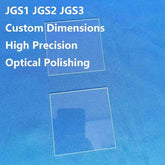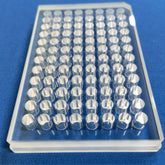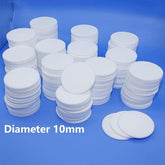Sapphire Glass: Is It the Ultimate Material for Mobile Phone Screens?
In recent years, sapphire glass has emerged as a highly favored material in the field of consumer electronics due to its exceptional performance. From smartphone displays to AR/VR devices and automotive windshields, this transparent ceramic, widely regarded as a benchmark material in advanced engineering, has been driving a transformative shift in material applications. This article provides an in-depth analysis of the core advantages of sapphire glass and examines its transition from laboratory research to a market with hundreds of billions in valuation.
1. Material characteristics: Why can it dominate high-end screens?
Sapphire glass, with a chemical formula of Al2O3, boasts a hardness of up to 9 on the Mohs scale, surpassing the 7 of diamond. Its scratch resistance is measured at 120 times that of Corning Gorilla Glass. The latest tests indicate that the impact resistance of sapphire glass treated with a nano-scale coating has been increased to three times that of traditional glass. It is vital to note that it boasts an impressive light transmittance rate of 92%, which is 15% higher than standard glass. Furthermore, it is capable of withstanding extreme temperature fluctuations ranging from -196℃ to 1200℃.
 2. Consumer electronics: The transformation from luxury items to standard configuration
2. Consumer electronics: The transformation from luxury items to standard configuration
(1) The revolution of mobile phone screens
Research shows that 38% of high-end global mobile phones now use sapphire glass screens. A 0.3 mm sapphire cover, boasting an ultra-thin design, has the potential to reduce the weight of mobile phones by as much as 23%. The innovative “honeycomb sapphire structure” developed by a leading manufacturer has been shown to achieve an impressive 94% increase in light transmittance, whilst concurrently reducing power consumption by a notable 18%.
(2) AR/VR devices
The large-scale adoption of sapphire glass eyepiece lenses has become a viable option, effectively solving the problem of lens fogging. Market analysis indicates that the sapphire glass market size for AR/VR devices will exceed 1.2 billion US dollars in 2025, with a compound annual growth rate of 45%.
3. Automotive field: Comprehensive penetration from sunroofs to intelligent cockpits

(1) New standards for windshield
Many car manufacturers now use sapphire glass in their windshields, which blocks 99% of UV rays. This reduces the amount of UV damage inside the vehicle by 72%. According to a certain patent, its new sapphire glass can include a temperature sensor to automatically adjust the brightness of the sunroof.
(2) The upgrade of intelligent cockpits
The latest sapphire glass battery cover plate, developed by a leading manufacturer, boasts a pressure resistance strength of up to 15,000 Pa, which is five times the resistance exhibited by traditional materials.
4. Technical breakthrough: The accelerating process of domestic production
(1) The development of mass production capacity
A leading manufacturer has successfully achieved mass production of 0.5 mm sapphire glass. The yield rate has surpassed 92% and manufacturing costs have been reduced by 40% compared to imported products. The innovative "honeycomb structure" technology have achieved a reduction in screen thickness of 0.2mm and weight of 35%.
The innovative "flash sintering method" technology, developed by a certain team, has significantly reduced the sintering time from 72 hours to 8 minutes and has achieved a 60% energy consumption reduction. The latest achievements demonstrate a significant enhancement in the grain boundary strength of the sapphire glass, reaching an impressive 98% of the theoretical value.






